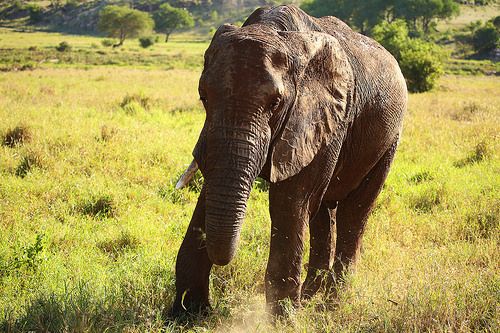แก้ไขปัญหาเรื่องการโกงเงิน ปิดยูสเซอร์ ล็อคยูสเซอร์จากตัวแทน เว็บของเราไม่ผ่านเอเย่นต์มีไลเซินซ์คาสิโน ถูกกฏหมายในต่างประเทศ เว็บแทงบอลที่ดีที่สุดในประเทศไทย แทงบอลขั้นต่ำ 10 บาท ราคาน้ำ 4 ตังค์ คืนค่าคอม 0.5% –…

Serengeti + Tarangire + Ngorongoro 5 NIGHT / 6 DAYS
Day 1: Arusha /Serengeti

Take lunch in afternoon at Arusha town (12h45), Arusha is a city located in Northern Tanzania with a large/medium number of population approximately 1,280,000. Where the Mount Meru is situated. The City is on the Eastern edge of the Eastern branch of the Great Rift Valley. Arusha has a temperate climate (FAVARABLE CONDITION).
Drive from Arusha / Serengeti at 14h00
Dinner and overnight at Serengeti (19h00)
Time consuming 4hours20/235km
Day 2: Serengeti National Park
Take breakfast 07h00.
After breakfast enjoying full day game drive in Serengeti national.
Game drive Serengeti National park (08h00). The Serengeti National Park is a Tanzanian national park in the Serengeti ecosystem in Mara and Simiyu regions. It is famous for its annual migration of over 1.5 million white bearded (or brindled) wildebeest and 250,000 zebra and for its numerous Nile crocodile and badger. Maasai: the Serengeti is believed to hold the largest population of lions in Africa due in part to the abundance of prey species. More than 3,000 lions live in this ecosystem. African leopard: these reclusive predators are commonly seen in the Seronera region but are present throughout the national park with the population at around 1,000. African bush elephant: the herds have recovered successfully from population lows in the 1980s caused by poaching, numbering over 5,000 individuals,[8] and are largely located in the northern regions of the park. Eastern black rhinoceros: mainly found around the kopjes in the centre of the park, very few individuals remain due to rampant poaching. Individuals from the Maasai Mara Reserve cross the park border and enter Serengeti from the northern section at times. African buffalo: still abundant and present in healthy numbers. Drive back to your hotel.
Dinner and overnight at Serengeti (19h00)
Day 3: Serengeti/Tarangire
Tarangire National Park is the sixth largest national park in Tanzania, it is located in Manyara Region. The name of the park originates from the Tarangire River that crosses the park. The Tarangire River is the primary source of fresh water for wild animals in the Tarangire Ecosystem during the annual dry season. The Tarangire Ecosystem is defined by the long-distance migration of wildebeest and zebras. During the dry season thousands of animals concentrate in Tarangire National Park from the surrounding wet-season dispersal and calving areas.
Take breakfast 07h00.
Time consuming 4hours20/229km
After breakfast 08h00 drive to Tarangire National Park for lunch and
Game driving with picnic lunch (13h00).
The park is famous for its high density of elephants and baobab trees. Visitors to the park in the June to November dry season can expect to see large herds of thousands of zebra, wildebeest and Cape buffalo. Other common resident animals include waterbuck, giraffe, dik dik, impala, eland, Grant’s gazelle, vervet monkey, banded mongoose, and olive baboon. Predators in Tarangire include African lion, leopard, cheetah, caracal, honey badger, and African wild dog.
Home to more than 550 bird species, the park is a haven for bird enthusiasts.
The park is also famous for the termite mounds that dot the landscape. Those that have been abandoned are often home to mongoose. Drive back to your hotel.
Dinner and overnight at Tarangire (19h00)
Day 4: Tarangire National Park
Tarangire National Park is the sixth largest national park in Tanzania, it is located in Manyara Region. The name of the park originates from the Tarangire River that crosses the park. The Tarangire River is the primary source of fresh water for wild animals in the Tarangire Ecosystem during the annual dry season. The Tarangire Ecosystem is defined by the long-distance migration of wildebeest and zebras. During the dry season thousands of animals concentrate in Tarangire National Park from the surrounding wet-season dispersal and calving areas.
Take breakfast 07h00.
After breakfast 08h00 drive to full day enjoying in Tarangire National Park and
Game driving with picnic lunch (13h00).
The park is famous for its high density of elephants and baobab trees. Visitors to the park in the June to November dry season can expect to see large herds of thousands of zebra, wildebeest and Cape buffalo. Other common resident animals include waterbuck, giraffe, dik dik, impala, eland, Grant’s gazelle, vervet monkey, banded mongoose, and olive baboon. Predators in Tarangire include African lion, leopard, cheetah, caracal, honey badger, and African wild dog.
Home to more than 550 bird species, the park is a haven for bird enthusiasts.
The park is also famous for the termite mounds that dot the landscape. Those that have been abandoned are often home to mongoose. Drive back to your hotel.
Dinner and overnight at Tarangire (19h00)
Day 5: Tarangire National Park/Ngorongoro
Take your Breakfast 07h00.
Crater game driving with picnic lunch at 08h00.
Game drive of the Tarangire National Park (08h00). The Park covers an area of 2600 sq km. It’s the 6th largest park in the country. The park is most spectacular between June and December. During this time thousands of animals migrate from dry Maasai steep to Tarangire River, looking for Water. Amongst other species to be seen at Tarangire are rhino, buffalo, elephant, lion, warthog, eland, the fringe eared Oryx, lesser and greater kudu, gerenuk and large number of impala. Drive back to your hotel for lunch (13hrs30).After lunch drive to NGORONGORO.
Dinner and overnight at NGORONGORO (08h00).
Time consuming 2hrs44/148kms

This Post Has 0 Comments